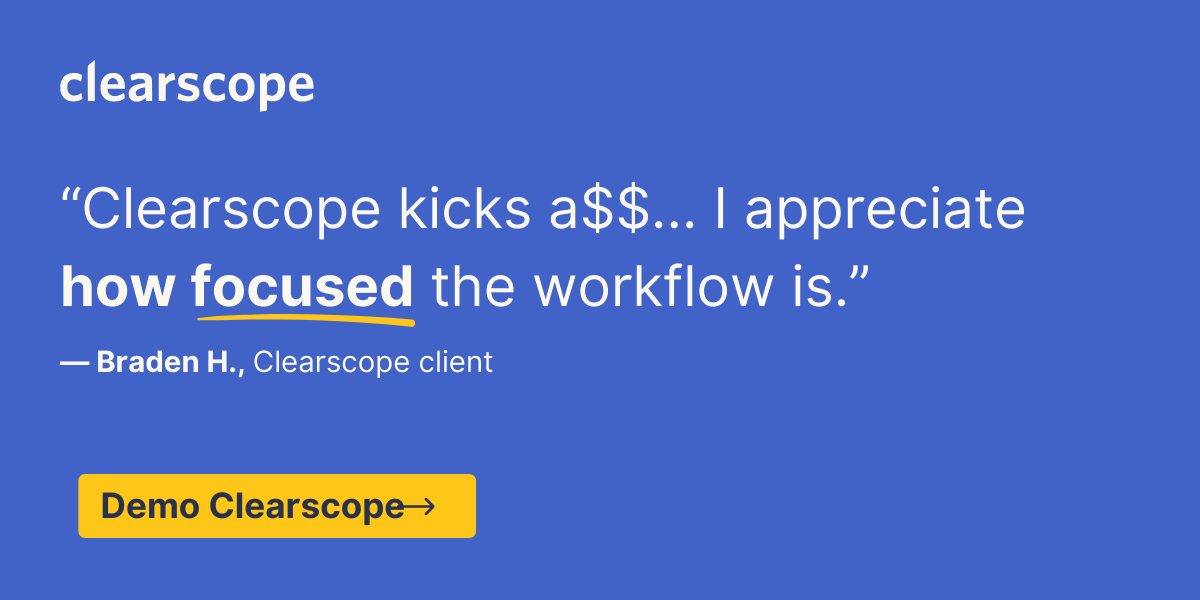
Table of Contents
Join our newsletter
Get access to trusted SEO education from the industry's best and brightest.
Wouldn’t it be nice if there was a simple, straightforward way to know the just right amount of AI use for your content-led SEO efforts?
AI content detection tools are faulty (I’ve tried a variety of tools in a variety of ways, and they all leave me disappointed).
But if Google seems to know when AI content generation is being misused to game search results, it has to be analyzed somehow, right? Therefore, it makes sense to make sure your content isn’t “too AI generated.”
Ultimately, it’s all in why and how you use AI content generation tools—and what parts of content production you’re using them for.
At a high level:
AI-assisted content leverages AI tools for drafting, structuring, editing, or brainstorming, but this type of content requires significant human expertise and editing to ensure uniqueness and quality.
AI-generated content is produced solely by AI based on existing information, with minimal human input, often lacking originality and insight. Think “push button” and “a few inputs” content or “automatic SEO content production and strategy.”
AI assisted content vs. AI generated content examples

AI-assisted content is generated by using AI tools to help you with the writing process, but it still relies heavily on human expertise and editing.
Examples of AI-assisted content:
Generating a light first draft with ChatGPT that’s revised and reworked to include a live interview
Creating a AI-generated SEO-optimized outline in one click that can help guide your subject matter expert (SME) writers
Using a tool like Clearscope to refine or rework an article for SEO created by a subject matter expert
Generating a framework or template for unique case studies to use with client success stories
Drafting a short product description summary with AI based on the original, genuine landing page copy
AI-generated content is content or copy that is created by an AI tool based on consensus information that already exists across the web. It relies on a few inputs from the user to generate information.
Examples of AI-generated content:
Generating a fictional story with a few plot guidelines
Using “one click” AI tools to generate 5 landing pages localized for 5 different cities
Drafting a long-form, SEO optimized blog for the search query [best ways to use AI for content marketing] and publishing without much editing or adding information gain
Auto-generated social media posts from a long-form blog
If the end goal is high-quality content, completely relying on AI-written content won’t benefit your content marketing strategy.
As a reminder: AI content generator tools don’t have the ability to create insight-led original content for your target audience.
But they still can play a helpful part as AI writing assistants.
Content expert Ryan Law, formerly at Animalz and now at Ahrefs, explains the difference between AI-assisted writing and AI-generated writing this way on the Animalz blog:
“[AI-assisted writing] will lift content marketing to new heights; [AI-generated writing] will trigger the ‘search singularity,’ an implosion of homogenous, copycat content on an unparalleled scale.”
Ultimately, AI is much better at assisting with elements of the content creation process.
The key is to automate elements of production, but not leave production to AI completely.
Ryan explains AI tools produce the best results when “humans are still doing the heavy lifting; we are still creating cohesive narratives, and we're still vetting things for accuracy.”
AI tools are best for elements of the creative process that don’t require much skill.
Ryan adds that the problems emerge when we rely solely on AI-generated writing and when we “write a big long-form post and we don't bother vetting it for accuracy or interest or narrative structure.”
Why AI-assisted content is the way to go
AI-assisted subject matter expert (SME) created content is superior to AI-generated, human-edited content—every time.
An AI content writing tool can assist a human expert in creating a faster outline, a clearer draft, and a better optimized final product that serves both humans and search engines.
Can a person do all this successfully without AI tools?
You bet.
But being able to save hours upon hours each week can allow you to create more, better higher-quality content than without.

And I’ve also seen it myself in my own practices before joining the Clearscope team.
One of my favorite AI-assisted content workflows that has been really beneficial for SEO efforts goes something like this:
Research consumer needs and knowledge gaps and pair with a natural query.
Generate an AI-based outline.
Revise outline based on deep knowledge of target audience and search intent.
Build a narrative draft off of the outline, using AI to support researching if necessary.
Use Clearscope while going through the second draft round. Look for opportunities for information gain using the “Add custom terms” feature in the report and review additional suggested terms.
Weave in expert opinions, client testimonials, and first-party data.
Use AI as needed to assist with grammar issues or wordiness.
Ensure the draft is fun and clear to read—get feedback from the team, including passing to an expert copyeditor if available.
Build the article and set it live!
It involves a lot of human touch, but I’ve seen lasting top results from producing content this way, even after algorithms shift.

My top best practices for creating original AI-assisted content you can feel good about
I’ve been in content marketing in some way, shape, or form for some time now, and I can be a bit particular when it comes to best practices.
And I can also be slightly conservative when it comes to using AI for content generation.
(But I will say, this conservative approach has only benefited the sites I’ve worked for over time, and they’ve successfully held or increased in organic traffic after a myriad of Google algorithm updates.)
If you’re going to create content with the assistance of AI tools, there are a few things to have in mind to keep things original:
Use AI for less creative tasks. AI can make an excellent brainstorming partner, but you don’t want to rely on it to produce all your content. Use it to summarize articles, generate social posts from your original content, and generate headlines that resonate with your target audience. Think assistant here.
Add information gain to your content, like first-party data, customer stories, interviews, and new perspectives. If you’re not doing this already, you’ll be missing out—and so is your audience. Read more about how and why to add information gain to your content.
Use subject-matter experts (SMEs). We all know AI hallucinates (ie, lies) from time to time. SMEs should still be driving and checking your content. Use AI-powered tools to help support their production, save time, and highlight their strengths.
Draft with Clearscope to ensure content is sharply optimized for user search intent. Clearscope is an AI-powered content-first SEO platform that supports you in creating high-quality content at scale—the kind of content that earns organic traffic for all the right reasons. While you focus on your content quality for your human readers, Clearscope can ensure it’s properly optimized for human search intent and search engines.

How Clearscope clients use Artificial Intelligence to scale content successfully
Clearscope.io doesn't directly create content itself, but it uses three of the most powerful language learning models (LLMs) available to assist human writers in scaling content creation in a streamlined way.
You can also create a one-click AI-generated, SEO-optimized draft outline within the app, which makes building content briefs that much simpler.
You can use Clearscope to:
Deeply understand search intent for targeted queries: Clearscope analyzes what your target audience is searching for and what kind of content ranks well for those searches. This helps you better match user intent, increasing your chances of ranking well.
Optimize your content confidently: AI helps analyze existing high-ranking content to identify elements that contribute to success. And then you get all those detailed recommendations to easily incorporate into your own content.
Analyze competing content pieces quickly: Automate your competitor research and content gap analysis. This frees up subject matter experts to focus on the most important aspects of content creation, like adding perspectives and information gain.
Closely monitor and protect content health: Our tools alert you when SERPs change and your content may no longer meet search intent. That way, you know exactly when to refresh decaying content to protect that organic traffic you worked hard to earn.
Ultimately, Clearscope uses AI from a people-first approach and an “AI-assisted” philosophy rather than an “AI-generated” approach.
That way, your content meets high-quality standards and is sharply optimized for search intent—and that makes both real people and search engines happy.

Contributing authors
The original version of this article was published September 15, 2023, by guest contributor Holly Stanley. It was updated on June 3, 2024 by the Clearscope team to include education on current best practices.
About Holly Stanley
Holly Stanley is a SaaS writer for ecommerce and marketing brands. You can read her articles on Ahrefs, AppSumo, Hootsuite, Writer, Zapier, and many more.




